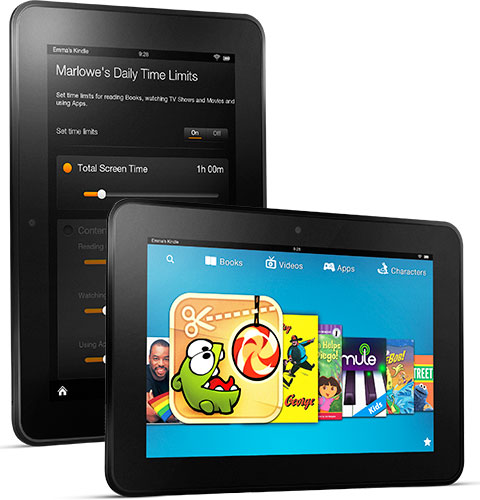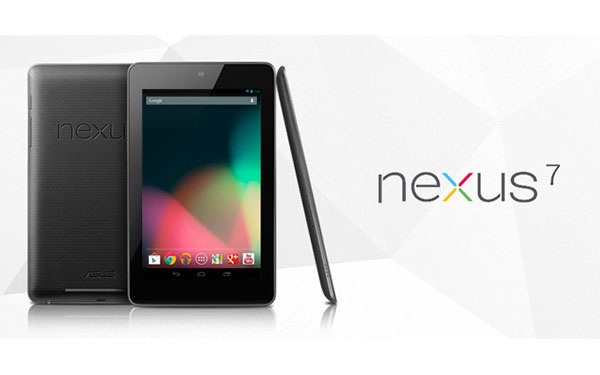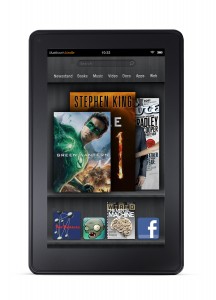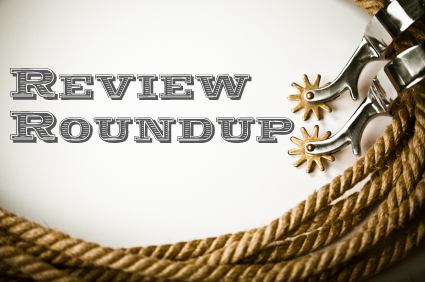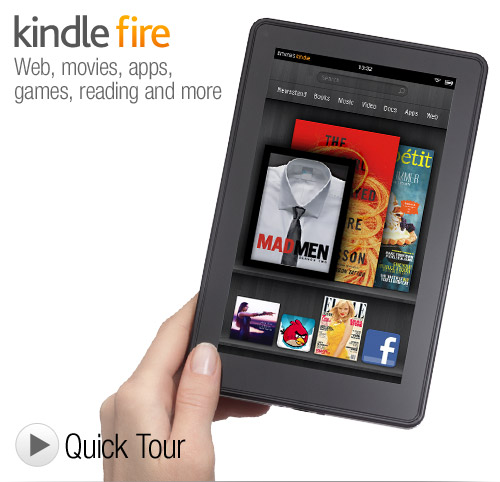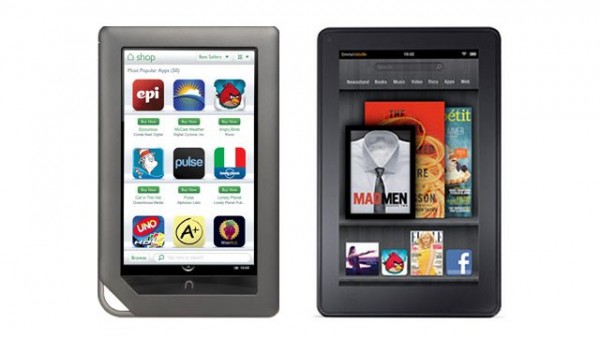 On December 16, 2012, Morgan Stanley issued the results of a consumer survey.
On December 16, 2012, Morgan Stanley issued the results of a consumer survey.
We surveyed 1,010 US adults between November 26 and December 3 2012. The sample is representative of US individuals (18+) by gender, age, income and geographic regions. Conclusions based on total sample have a maximum margin of error of +/- 2.5% at 90% confidence level.
(NOTE: All quotations are sourced from the Morgan Stanley report.)
1) TABLETS
The first and most obvious result of the survey was that tablets, as a whole, were going to be clear winners of the 2012 holiday quarter.
One-third of respondents own tablets today, compared to only 8% a year ago.
While this can come as no a surprise to anyone following the tech industry, it is important to note that, in terms of gift giving for this holiday quarter, the growth of the tablet has come at the expense of notebooks, desktops and especially e-readers.
2) E-READERS
Among consumer electronic gifts, tablets are the most popular, followed by smartphones, while e-readers experienced the largest decline.
— Tablets (50% in 2012 vs. 31% in 2011)
— Smartphones (26% in 2012 vs. 17%)
— E-readers (9% in 2012 vs. 31%)”
Tablets are the number one gift idea in consumer electronics this year, while it was a tie between tablets and e-readers last year.
iSuppli seems to concur with this sentiment, indicating that general purpose tablets are harming e-reader sales.
It appears that they e-readers may well be relegated to niche status as general purpose tablets – which also serve as e-readers – become lighter, smaller and lower-priced.
3) AMAZON KINDLE FIRE
While the Kindle Fire is not strictly an e-reader, it too seems to be suffering this holiday season.
Kindle Fire appeal seems to be waning as 16% of potential tablet buyers would pick the device vs. 21% in last year’s survey
Lower end tablets may be suffering from the effects of increased competition. While the Amazon Kindle Fire was the a hot holiday gift in the fourth quarter of 2011, it now has to compete with the Nexus 7, Windows 8 tablets and the iPad Mini. As a result, Kindle retention numbers dropped from an already low 40% to and even lower 36%.
If these numbers bear out, this has to be terribly dissapointing for Amazon. Last year, there was a burst of enthusiasm for the Kindle Fire line during the holiday quarter but that enthusiasm seemed to all but evaporate as soon as the quarter ended. This year, Amazon introduced several new lines of tablets and vastly improved the quality of their hardware offerings. Surely they anticipated increased, rather than decreased, enthusiasm for their products.
It is too early to tell for sure, but it is possible that we’re seeing a trend away from single purpose tablets and a trend towards higher quality, general purpose tablets instead.
4) SAMSUNG
Samsung phones made an impressive leap in rate of retention from 37% to 63%. (Note, however, that this still does not match the iPhone’s stellar 83% rate of retention.)
While Apple’s retention rate is by far the highest, iPhone users who plan to buy a Samsung device increased slightly from 3% to 8%, though this share came entirely from other Android vendors who saw less interest from current Apple users compared to a year ago. This reflects Samsung’s dominating position in the Android ecosystem and success in marketing itself as an iPhone alternative.
You simply have to be amazed at what Samsung has accomplished and in such a short time. But ironically, Samsung’s growth is not only coming at the expense of competitor’s like RIM and Nokia, but it is also coming at the expense of other Android manufacturer’s as well.
One of the strengths of a licensed operating system like Android is supposed to be diversity of hardware manufacturers. That simply hasn’t happened. While Microsoft distributed its software licences to thousands of hardware manufacturers, Samsung has become the one and only hardware manufacturer that matters to Android. We’ll have to save the discussion of the consequences of this unexpected development for another day.
5) MICROSOFT
The survey contains two interesting points regarding Microsoft’s recent tablet efforts.
First, Microsoft Surface is preferred by 12% of those planning to buy a tablet.
Second, while 81% of iPad users plan to stay with Apple, 8% plan to purchase Microsoft’s surface.
Additionally, a different survey indicates that Windows 8 is a very distant third, to iOS and Android, when it comes to developer’s platform preferences.
I think these results have to be terribly dissapointing to Microsoft. Some pundits were expecting a flood of defections from the iPad once Microsoft debuted its tablet offerings. That clearly is not happening.
Further, I had anticipated an initial burst of enthusiasm for Windows 8 tablets. The real question, in my mind, was whether Microsoft would maintain that initial enthusiasm. Instead, sales of Windows 8 tablets has been tepid, at best. Having 12% of consumers intending to buy your products is far better than having 0% able to buy your products, but I believe that it is far, far less than Microsoft was hoping for or expecting.
6) APPLE
It seems as though the bad press for Apple has been endless of late, but that negative view is not supported by the Morgan Stanley survey. They point to at least four reasons why Apple can be optimistic about sales this holiday quarter.
First, more survey respondents want to buy the iPhone 5 today than the iPhone 4S a year ago.
34% of consumers plan to buy an iPhone in the next 6 months, compared to 30% in last year’s survey
If I recollect, the iPhone 4S was pretty popular last year. And one would assume that even more enthusiasm for the iPhone 5 should lead to even more sales this holiday quarter.
Second, analysts keep opining that Apple needs to sell a cheaper phone but customers keep disagreeing.
More respondents plan to buy the newest iPhone model today than a year ago (86% vs, 82%), likely due to key hardware improvements in the iPhone 5: LTE, brighter screen, and lighter and thinner phone.
Third, the iPad Mini does not appear to be cannibalizing the larger iPad but it does appear to be bringing new customers into the Apple ecosystem.
We believe iPad Mini’s cannibalization risk to iPad 9.7” is manageable. 47% of iPad mini purchasers are new to Apple, according to our survey. This is only slightly lower than 56% for the larger iPad 9.7”, suggesting the smaller iPad is attracting new users to the platform in addition to some incremental or replacement purchases from the existing 9.7” iPads.
Fourth, Apple actually INCREASED its already industry leading retention rate.
Apple’s iPhone retention rate improved 10 points over the last year, and 83% of iPhone users today plan to buy another iPhone.
I find it hard to believe that Apple’s sales are going to suffer this quarter when both purchasing enthusiasm and retention rates are going up.
7) CONCLUSION
There is definitely going to be a shake-out in the mobile sector. There are just too many entrants with too little differentiation.
In phones, not only are Samsung and Apple rapidly increasing their sales numbers but their RETENTION numbers are also rapidly rising. This bodes ill for the likes of RIM and Windows 8 contenders like Nokia and HTC.
In tablets, Apple seems to be maintaining its grip on half the market while Amazon, Google, Microsoft and Samsung battle it out for the other half. Again, in the long run, retention numbers may be what matters most but it is too soon to measure retention for newly minted products like the Google Nexus 7 and the Microsoft Surface.
We’ll know far more in January when (some of) the numbers come out. But until then, the Morgan Stanley survey may give us a peek at what we should expect.











